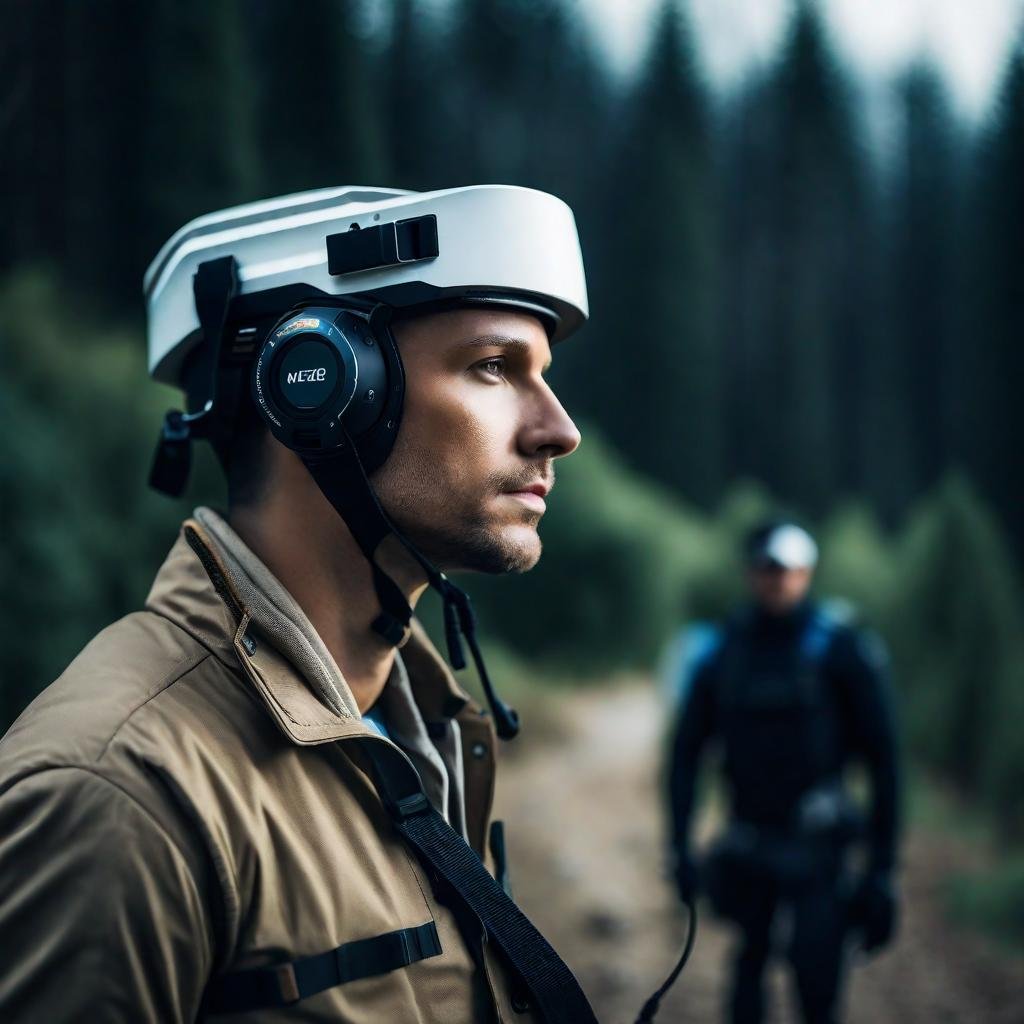Introduction: The technology behind Disaster Preparedness
Welcome to ChangeOfTech.com, where we explore the dynamic world of technology and its impact on our lives. In this article, we delve into a critical aspect of our safety and well-being – “The technology behind Disaster Preparedness.” In an era where natural and man-made disasters are on the rise, understanding the role of technology in enhancing our preparedness is more crucial than ever.
Table of Contents
Innovations in Early Warning Systems
In recent years, the technology landscape has witnessed remarkable advancements in Early Warning Systems (EWS). These systems utilize state-of-the-art sensors, satellite data, and machine learning algorithms to detect potential disasters in their early stages. Earthquakes, hurricanes, and tsunamis are now being predicted with unprecedented accuracy, giving communities valuable time to evacuate and prepare.

Communication Breakthroughs in Crisis Situations

When disaster strikes, communication is the key to coordinating relief efforts and saving lives. With the advent of satellite communication, drones, and resilient networks, emergency responders can now maintain connectivity even in the most challenging situations. This ensures that information flows seamlessly, helping authorities make informed decisions and citizens stay informed about evacuation routes and safety protocols.
Artificial Intelligence in Disaster Response
Artificial Intelligence (AI) has emerged as a game-changer in disaster response. AI algorithms analyze vast amounts of data, including weather patterns, social media feeds, and infrastructure status, to predict the impact of disasters and optimize response strategies. From predicting flood patterns to coordinating rescue missions, AI is at the forefront of revolutionizing how we handle crises.

Smart Infrastructure for Resilient Cities

In the face of disasters, having resilient infrastructure can make all the difference. Smart cities are integrating technology into their infrastructure to enhance resilience. This includes sensor-equipped buildings that can withstand earthquakes, smart grids for efficient energy distribution during crises, and automated systems for water management to prevent flooding.
Wearable Tech for Personal Safety
Individual preparedness is as important as community readiness. Wearable technology, such as smartwatches and health trackers, now includes features that can contribute to personal safety during disasters. These devices can monitor vital signs, detect environmental changes, and send alerts to emergency services or loved ones in case of an emergency, providing an added layer of protection.

The Role of Drones

in Search and Rescue Drones have become indispensable tools in disaster response, particularly in search and rescue operations. Equipped with cameras and sensors, drones can quickly survey affected areas, identify survivors, and assess the extent of damage. They navigate areas that may be inaccessible to traditional rescue teams, expediting the overall response time and saving lives.
Virtual Reality (VR)
For Emergency Preparedness Training Training for disaster scenarios is crucial for first responders. Virtual Reality technology is now being utilized to simulate realistic disaster scenarios, allowing emergency personnel to undergo immersive training experiences. This not only enhances their decision-making skills but also familiarizes them with potential challenges they might face during actual crisis situations.

Big Data Analytics for Predictive Modeling

Big Data analytics has become a cornerstone in disaster preparedness by providing insights through predictive modeling. By analyzing vast datasets, including historical disaster records, weather patterns, and demographic information, experts can anticipate potential risks and plan preventive measures accordingly. This data-driven approach enhances our ability to proactively mitigate the impact of disasters.
Mobile Apps for Emergency Planning
In the age of smartphones, mobile applications play a pivotal role in disaster preparedness. From providing real-time alerts to offering interactive maps with evacuation routes, these apps empower individuals to make informed decisions during emergencies. They also serve as a communication platform, allowing users to connect with emergency services and share critical information with their community.

3D Printing in Humanitarian

Aid 3D printing technology has found a unique application in disaster relief efforts. It enables the rapid production of essential items, such as medical supplies, shelters, and even infrastructure components. This on-demand manufacturing capability proves invaluable in providing timely assistance to affected regions where traditional supply chains may be disrupted.
FAQs: The technology behind Disaster Preparedness

Q1: How do Early Warning Systems work? A1: Early Warning Systems utilize a combination of sensors, satellite data, and advanced algorithms to detect the initial signs of a disaster. These systems provide timely alerts, allowing communities to take preventive measures or evacuate if necessary.
Q2: How does technology aid in communication during disasters?
A2: Technology enhances communication during disasters through satellite communication, resilient networks, and drones. These tools ensure that emergency responders and citizens can stay connected, facilitating efficient coordination of relief efforts.
Q3: What role does Artificial Intelligence play in disaster response?
A3: Artificial Intelligence analyzes data from various sources to predict the impact of disasters and optimize response strategies. It helps in decision-making, resource allocation, and coordination of rescue missions, ultimately improving the effectiveness of disaster response efforts.
Q4: Can technology make infrastructure more resilient to disasters?
A4: Yes, technology plays a crucial role in building resilient infrastructure. Smart cities integrate sensors and automated systems into their infrastructure to withstand disasters. This includes earthquake-resistant buildings, smart grids, and advanced water management systems.
Q5: How can wearable tech contribute to personal safety during disasters?
A5: Wearable technology, such as smartwatches and health trackers, can monitor vital signs, detect environmental changes, and send alerts during disasters. This helps individuals take timely actions for their safety and well-being.
Q6: What role do drones play in disaster response?
A6: Drones are essential in disaster response for search and rescue operations. Equipped with cameras and sensors, drones can quickly survey affected areas, identify survivors, and assess damage, expediting the overall response time.
Q7: How is Virtual Reality used in emergency preparedness training?
A7: Virtual Reality is used to simulate realistic disaster scenarios for emergency personnel. This immersive training helps them develop decision-making skills and become familiar with potential challenges they might encounter during actual crisis situations.
Q8: How does Big Data analytics contribute to disaster preparedness?
A8: Big Data analytics helps in predictive modeling by analyzing vast datasets, including historical records and weather patterns. This data-driven approach allows experts to anticipate potential risks and plan preventive measures, enhancing our ability to mitigate the impact of disasters.
Q9: What role do mobile apps play in emergency planning?
A9: Mobile apps are essential for emergency planning, providing real-time alerts, interactive maps with evacuation routes, and serving as communication platforms. They empower individuals to make informed decisions and connect with emergency services during crises.
Q10: How is 3D printing used in humanitarian aid during disasters?
A10: 3D printing is employed in disaster relief efforts to rapidly produce essential items like medical supplies, shelters, and infrastructure components. This on-demand manufacturing capability proves invaluable in providing timely assistance to affected regions with disrupted supply chains.
Conclusion: The technology behind Disaster Preparedness
As we navigate the ever-evolving landscape of disaster preparedness, technology stands as a beacon of hope. Innovations in Early Warning Systems, communication breakthroughs, the integration of artificial intelligence, and the development of smart infrastructure collectively contribute to our ability to face disasters head-on. Embracing these technological advancements is not just a choice; it’s a necessity in safeguarding our communities and ensuring a more resilient future. Stay tuned to ChangeOfTech.com for more insights into the transformative power of technology in our lives.
The technology behind disaster preparedness continues to evolve, embracing innovations that not only enhance community resilience but also empower individuals to take an active role in their safety. From wearable tech providing personal alerts to drones revolutionizing search and rescue operations, and Virtual Reality transforming training methods – technology is shaping a future where we are better equipped to face the unexpected. As we navigate the complexities of an unpredictable world, the ongoing integration of technology into disaster preparedness strategies remains a beacon of progress and hope. Stay informed, stay prepared, and stay tuned to ChangeOfTech.com for the latest on the transformative impact of technology in our ever-changing world.
As we wrap up our exploration of the technology behind disaster preparedness, it’s evident that our reliance on technological innovations continues to grow. From predictive modeling with Big Data analytics to the convenience of mobile apps and the versatility of 3D printing, each advancement contributes to a more resilient and responsive disaster management system. ChangeOfTech.com remains your go-to source for staying abreast of these transformative technologies and their impact on our collective safety and well-being. Embrace the future of disaster preparedness, where technology is a trusted ally in times of uncertainty.
